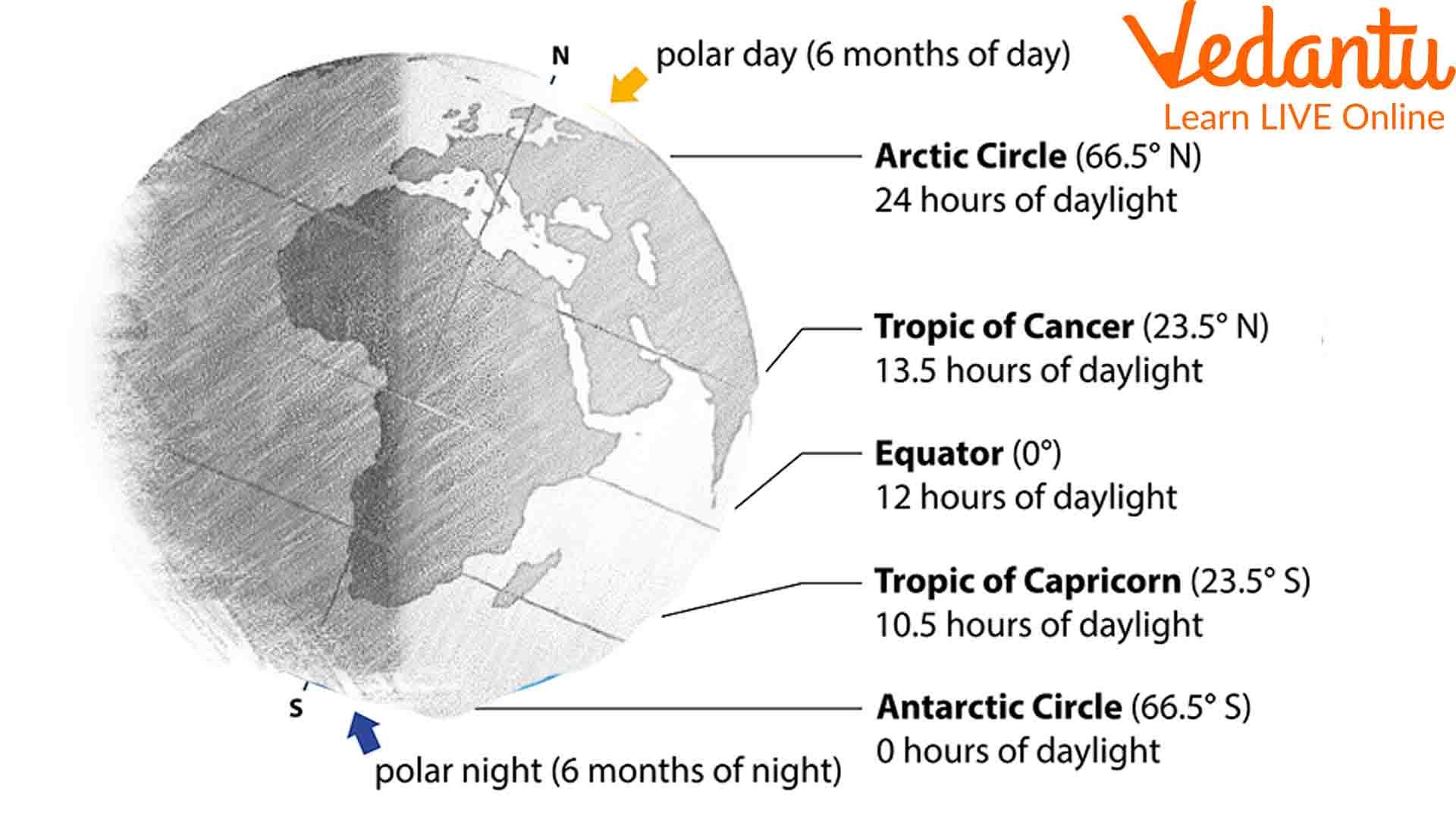Which is the Longest Day of the Year?
The days are longer during the summer season. The sun stays a little longer in the sky on summer days. On the contrary, the winter days are shorter. How did this natural phenomenon happen? What is the scientific reason behind the variation in the duration of the days and nights across a year?
If the duration of the day and night varies then there must be a date when the day is the longest. It is called the summer solstice. Let us find out more about it and check how many hours the sun stays in the sky on the biggest day of the year.
Why are the Summer Days Bigger?
The earth rotates around its axis and revolves around the sun. Due to this rotational motion and revolution of the earth, one of the poles faces the sun more than the other one in a particular time span of the year. It means a hemisphere of the earth faces the sun more than the other. Due to this phenomenon, the days in a particular time span of the year become longer than the nights. It occurs when a hemisphere is in its summer cycle of the year.
We all know that the earth takes 365 days to revolve around the sun once. During a revolution, the earth rotates around its axis too. An axis is an imaginary line that connects the two geographic poles on the earth. We also know that one rotation on its axis takes 24 hours to complete. Day and night are distributed during these 24 hours.
During the summer season, the northern hemisphere tends to face the sun more. Due to the inclination in the axis, the days become bigger than the nights. The sunrays falling on the earth’s surface in the Northern Hemisphere increase and the continents receive more daylight during the summer season. The time span of the day, thus, increases as we approach summer and eventually attains the longest day of the year. It is called the summer solstice.
What is the Summer Solstice?
As mentioned earlier, the reason behind a long day in the summer is clear now. Countries in the Northern Hemisphere such as the USA, India, China, Russia, etc. receive more daylight and the night span reduces.
The duration of the days grows longer than the night. Eventually, a day comes when the daytime is the longest of the year. This day is called the Summer Solstice. It happens on 21st June every year. Actually, there is a span of days when the Northern Hemisphere experiences the longest days. It ranges from 21st June to 23rd June.
It happens due to the inclination of the earth’s axis by 23.4 degrees. What does it mean? The earth’s pole is not vertical to the orbital plane it follows to revolve around the sun. Our planet is a little tilted resulting in the development of the largest day of the year.
What is the Longest Day of the Year?
To answer this question, we need to rewind to what we have discussed before. Think of it this way, when the North Pole faces the sun more than the South Pole due to the tilt of the earth’s axis, the upper part of the Equator or the Northern Hemisphere receives more sunlight.
It means the sun remains in the sky longer than 12 hours. This is why we experience a big day in the summer around 21st June. The longest day of the year in India happens on the same day when the sun is exactly above the Tropic of Cancer (23°27′ N) above the Equator. We experience the longest day on 21st June till 23rd June. As per the convention, the 21st of June of a year is considered to be the Summer Solstice.
A general question arises in our minds. What happens to the Southern Hemisphere then? The countries in this hemisphere will witness the longest nights of the year. It is called the Winter Solstice in the Southern Hemisphere.

Summer Solstice Diagram
When is the Summer Solstice in 2022?
In India, the Summer Solstice happened on 21st June at 2.43 PM IST. The longest day we witnessed was Tuesday. On the other hand, the nights in the countries falling on the Tropic of Capricorn (23.4394°S) were the longest. This is what happens during the summer solstice in the Northern Hemisphere.
Facts About Summer Solstice
The term ‘solstice’ is derived from the Latin words ‘sol’ meaning the sun and ‘sistere’ meaning standing still. During these days, the sun seems to stand still in the sky. This is why they are named solstice.
According to historians, Stonehenge was built to earmark the summer solstice. The Heel Stone in this ancient architecture receives the first rays when the sun rises. Eventually, the sun climbs to the centre of the monument at noon.
During the summer solstice, the sun rises in the left-farthest corner of the eastern sky and sets in the right-farthest corner of the western sky in the Northern Hemisphere.
The summer solstice in the Southern Hemisphere occurs from 21st December to 22nd December. The date may vary based on the time of the year.
In a Nutshell
According to NASA, the summer solstice is when the North Pole receives as much as 30% extra sunlight than the Equator. The dates in the calendar for this natural phenomenon vary due to the mismatch in our calendar and the tropical year length or the time taken to complete one revolution.
This is all about the summer solstice in the Northern Hemisphere. The summer and winter solstices are exactly the opposite in terms of dates in the two hemispheres. It all depends on the inclination of the earth’s axis facing the sun.







